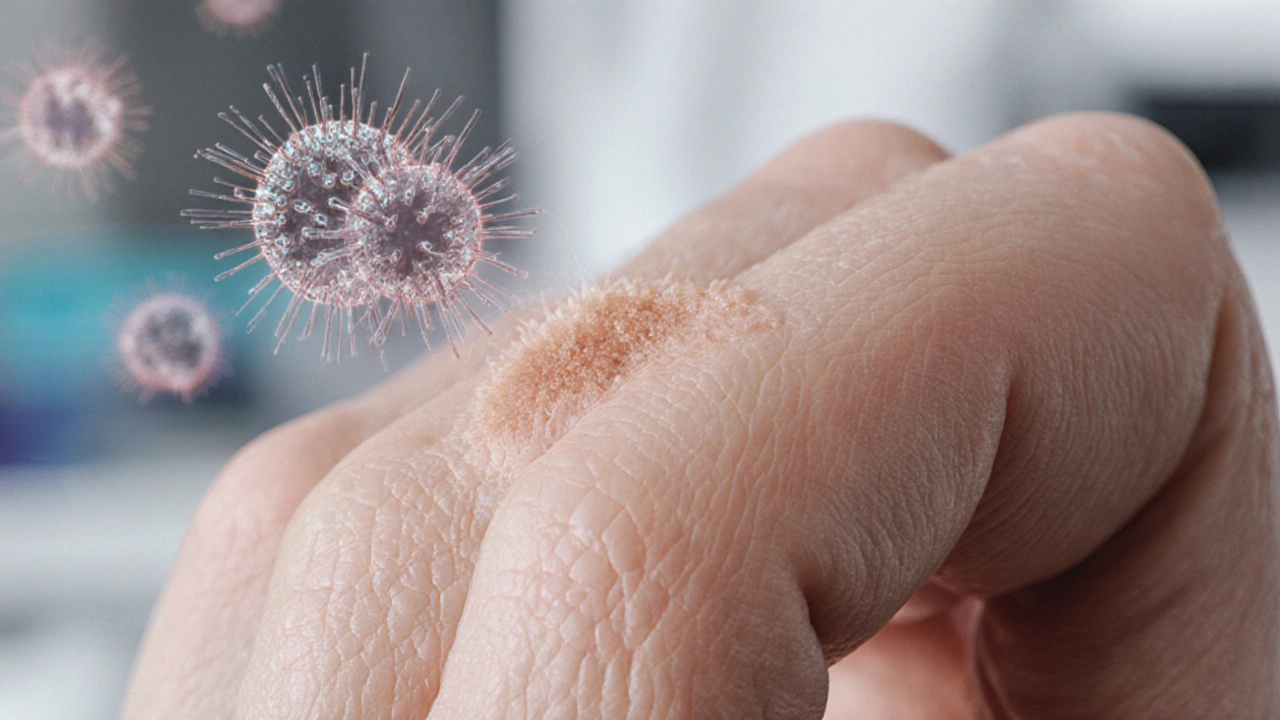
Learn how HPV causes common skin warts, identify risk factors, explore treatment options, and discover preventive steps, including vaccine insights.
When working with HPV vaccine, a preventive injection that protects against infection by high‑risk human papillomavirus types. Also known as human papillomavirus immunization, it plays a critical role in reducing rates of cervical cancer and other HPV‑related diseases. This short guide breaks down the basics, the science, and the real‑world choices you’ll face when deciding whether to vaccinate.
First, understand the virus itself. human papillomavirus, a group of more than 150 viral strains, some of which are linked to cancers of the cervix, throat, and genital area is extremely common—most sexually active people encounter it at some point. The vaccine targets the high‑risk strains (especially types 16 and 18) that cause about 70% of cervical cancers. By neutralizing those strains before they can infect cells, the vaccine essentially blocks the first step in the cancer‑development chain.
Speaking of cancer, cervical cancer, a malignant growth of the cervix often driven by persistent high‑risk HPV infection is one of the most preventable cancers worldwide. Years of screening and treatment have lowered mortality, but vaccination offers a proactive shield. Studies show vaccinated populations experience a steep drop in precancerous lesions within a few years of rollout, underscoring the vaccine’s public‑health impact.
There are a few brand names on the market, but the most widely used in the U.S. and many other countries is Gardasil, the commercial name for the quadrivalent and nonavalent HPV vaccines that protect against four or nine HPV types respectively. Gardasil 9, the newer version, adds protection against five additional cancer‑causing strains, broadening coverage even further. Knowing which formulation your doctor recommends can help you gauge the breadth of protection you’ll receive.
The vaccine follows a simple dosing schedule: most people need two shots spaced six to twelve months apart, while those starting after age 15 typically receive a three‑dose series. This immunization schedule, the timing plan that ensures optimal immune response and lasting protection is designed to fit into routine doctor visits, making it easy to stay on track. Side effects are mild for the vast majority—soreness at the injection site, low‑grade fever, or brief fatigue—none of which outweigh the long‑term cancer‑prevention benefits.
Now that you’ve got the core facts, the collection below will dive deeper into related topics: from managing vaccine side effects to understanding how HPV links to other health issues, and even practical tips for discussing vaccination with family members. Browse the articles to arm yourself with the knowledge you need to make an informed decision and keep your health on the right track.

Learn how HPV causes common skin warts, identify risk factors, explore treatment options, and discover preventive steps, including vaccine insights.